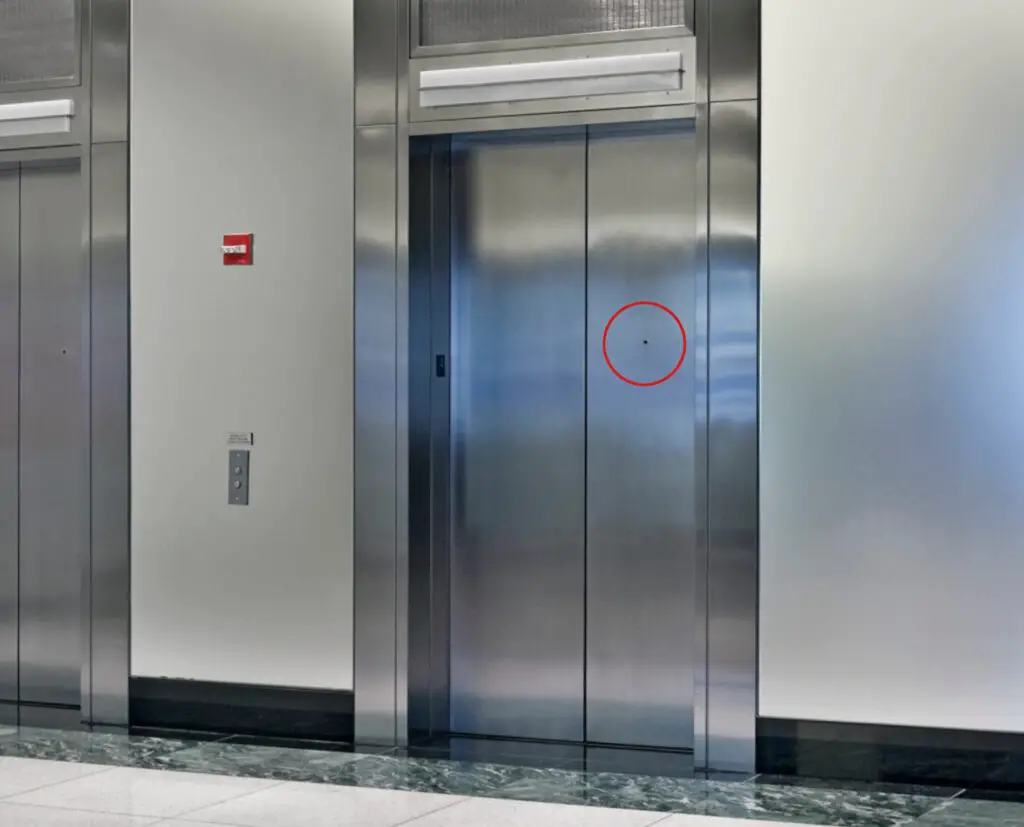While you won’t see it on every elevator door, many of them have one tiny hole in one panel of the door. It is reasonable to assume that since it resembles a peephole like in a regular door, this would be what it is so that someone on the outside could look in on passengers of the elevator for some reason. This would not be correct, but that tiny hole in elevator doors does have an important job.
Quite simply, these tiny, round holes in elevator doors are keyholes. Elevators are built with many safety features, and these holes are one of them. Elevators have two sets of doors, one opening to the floor called the landing door and another that is part of the elevator compartment, more specifically known as the cabin, cab, car, or carriage.
If an elevator stops and the cabin doors won’t open due to some mechanical or other problem, there needs to be a way for rescuers or maintenance personnel to get to the passengers if the problem can’t be corrected. Most of the time, the elevator gets fixed and moves on its way before the keyhole is needed, but sometimes, the elevator needs to be accessed more quickly due to a more pressing problem such as a fire or panicked passenger. This is where the tiny holes in elevator doors come into play.
Maintenance personnel and firefighters have access to a tool called a hoistway door unlocking device or drop key, which is usually kept in a secure location in the building that can only be accessed by approved personnel. This can be in what is known as a Knox box, a place where important keys to a building are kept. Firefighters and elevator technicians might even carry their own unlocking devices or drop keys. The tiny hole doesn’t have an official name, though sometimes it’s referred to as an escutcheon or escutcheon tube (like the one in our ears).
This special key is inserted into the tiny hole in the landing elevator door and allows that door to be released and opened. This is when certain specific procedures are followed to get people out of the dangerous situation posed by an elevator between floors. These landing doors are also opened with this key when the elevator needs to be repaired or inspected, whether the cabin is present on that floor or not.
These holes have been required on elevator doors since the 1970s when new fire codes began to require them. Elevator manufacturers Otis and Schindler began incorporating them into their elevators at this time. Firefighters don’t have to have the key to get the doors open as they can force their way in, but the key does make things easier since the firefighters would have to damage the door.
But, as stated before, many elevator doors do not have these keyholes. That’s because some jurisdictions determined that the holes could impose a safety risk as anyone with the key could access the landing door, and opening it could lead to an open elevator shaft when no elevator cabin was there.
Sources: Reader’s Digest, Slate, Finger Lake Times




